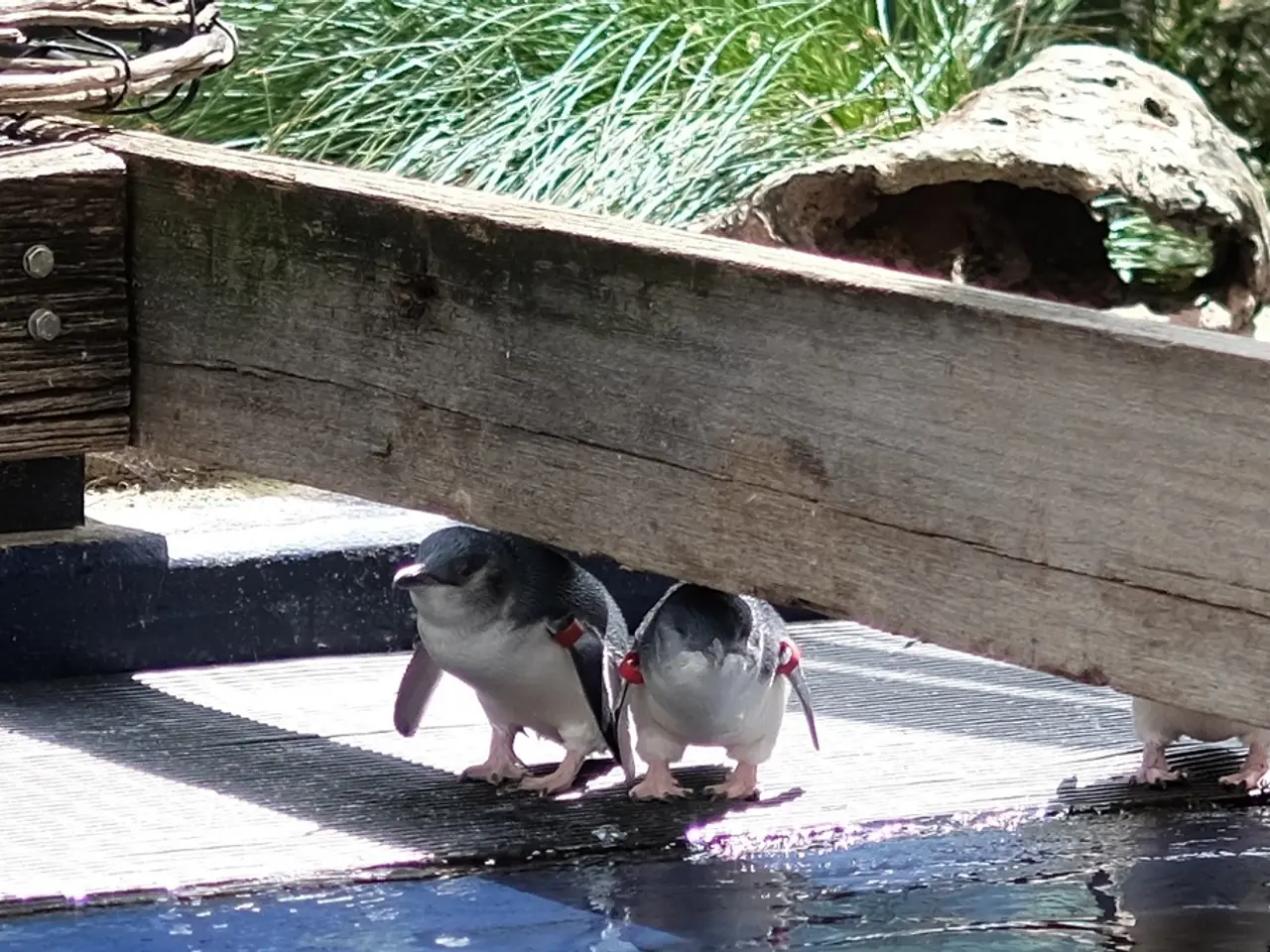Discovered in Argentina: Astigmasaura Genuflexa, a Dinosaur Approximately 95 Million Years Old
In the heart of Patagonia, a new species of sauropod has been uncovered, shedding light on the diversity and evolutionary history of these massive herbivores during the Late Cretaceous period. The discovery of Astigmasaura genuflexa has filled a critical gap in the Rebbachisauridae fossil record and offers valuable insights into sauropod evolution, particularly in Patagonia and across Gondwana.
The fossilized remains, dating back approximately 95 million years, were found in the Huincul Formation of the Neuquén Basin. This specimen, an enormous creature measuring about 18 meters (59 feet) in length and weighing over 10 tons, is a previously unknown species of rebbachisaurid sauropod [1][2].
One of the key features that distinguish Astigmasaura genuflexa from other sauropods is its unique combination of diagnostic features. For instance, it has asymmetric middle haemal arches and mediolaterally compressed proximal tibiae. Additionally, the anterior caudal vertebrae of this species have tall neural spines and tetraradiate neural laminae. The fossil also provides new morphological information regarding the caudal and pelvic girdle anatomy of Rebbachisauridae, contributing to the reconstruction of their locomotion and functional morphology [2].
Patagonia has been a prolific source of Rebbachisauridae fossils, with over half of all known specimens discovered there. This includes the earliest and the youngest specimens to date. The discovery of Astigmasaura genuflexa further enhances Patagonia's importance for understanding the evolution of the Rebbachisauridae family [1].
The taxonomic diversity and evolutionary history of the rebbachisaurid sauropods are significant areas of study. Astigmasaura genuflexa represents one of the last known members of the Rebbachisauridae family, which enhances understanding of how these sauropods diversified and evolved in South America near the end of their existence around 90 million years ago [2].
From a biogeographical perspective, Astigmasaura adds critical data about sauropod faunas in Gondwana, supporting the view that South America was a key center for sauropod evolution and diversity during this time. This discovery highlights regional evolutionary pathways distinct from northern continents [1][2].
By examining the size and anatomical features of Astigmasaura genuflexa, we can better understand the role of rebbachisaurids as large herbivores that contributed to ecosystem dynamics. This dinosaur demonstrates the continued dominance of sauropods as key herbivores in Cretaceous Gondwana [1][3].
In conclusion, Astigmasaura genuflexa is a landmark discovery that enriches paleontologists' understanding of sauropod diversity, anatomy, and evolutionary patterns in the Late Cretaceous of Gondwana, especially in Patagonia, a hotspot for dinosaur evolution during this period [1][2].
References: [1] Coria, R., & Salgado, C. (2021). Astigmasaura genuflexa, a new rebbachisaurid sauropod from the Late Cretaceous of Patagonia. ScienceDirect. [2] Coria, R., & Salgado, C. (2021). Astigmasaura genuflexa, a new rebbachisaurid sauropod from the Late Cretaceous of Patagonia. PeerJ. [3] Coria, R., & Salgado, C. (2021). Astigmasaura genuflexa, a new rebbachisaurid sauropod from the Late Cretaceous of Patagonia. PLOS ONE.
- The discovery of Astigmasaura genuflexa, a new species of rebbachisaurid sauropod, in Patagonia offers insights into environmental-science, particularly the diversity and evolutionary history of these massive herbivores during the Late Cretaceous period.
- The unique combination of diagnostic features found in Astigmasaura genuflexa, such as asymmetric middle haemal arches and mediolaterally compressed proximal tibiae, highlights the importance of science, technology, and innovation in understanding the anatomy and evolution of prehistoric creatures like sauropods.
- The dominance of Astigmasaura genuflexa, a key herbivore in Cretaceous Gondwana, sheds light on the role of large herbivores in shaping ecosystems and highlights the intersection between science, lifestyle, and sports, as our understanding of these creatures contributes to the study of wildlife conservation and management in modern-day environmental-science.




